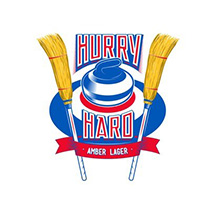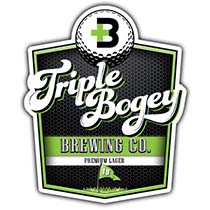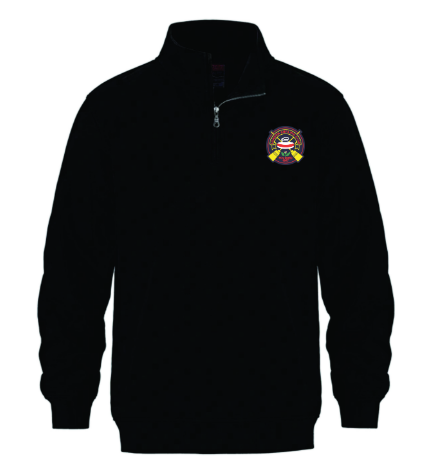Whether you are brand new to the sport or an experienced curler from another club, there is likely a lot to learn about club operations and protocols. The following information is intended to provide you with a brief overview and orientation to the club.
Each league will have some slight differences in how it functions, but generally the following basics are common across the club. Each league is organized by a volunteer coordinator who sets up the schedule ("the draw") for the league. The exact number of teams in each league is finalized very close to the end of September each year. The convenor then establishes the schedule and sends this information out to each skip. It is the skip's responsibility to contact the members of the team prior to the first game to confirm the date and time of the first game. Thereafter, the schedule is posted on a bulletin board assigned to each league and the schedule is also posted on the club website. Each league will have a list of people who have indicated that they wish to spare. These names are also posted on the league bulletin board and on the website. If you wish to spare for a league, you should do so when you fill out your registration form, or if you wish to do so later in the season, you should contact the office. If you become a spare for another league, you can spare up to five times during the season if you are registered as a once per week curler. If you are registered for two or more leagues, you can spare an unlimited number of times. Non-club members who spare are required to pay $20 per time. If you are going to be away for a game, you will be responsible for arranging for your own spare and then letting the skip know. It is best to begin arranging for your spare as far in advance as possible as it is sometimes quite difficult to find a spare.
There are sign-up sheets posted on a variety of bulletin boards throughout the club. Print your name on one of these forms. Orders are placed with the supplier every few weeks. When the name tags are ready, that information is posted at the bar. Pay the bartender for your name tag when you pick it up.
The club occassionally offers free clinics at beginner, intermediate and advanced levels. In addition, you can come out and practice on your own at no cost. Ice time is very limited so check with the office about available times for practice.
Locate an empty locker in the change room and then go to the office (or call) and request that locker. There is an annual fee for the locker rental. Whether you have a locker or not, members are expected to change in the change rooms. The lounges are not for changing shoes or storing personal belongings when you are on the ice.
Our club has one of the best Pro Shops in the region and carries a full line of shoes, brooms, sticks, gloves, and apparel from the major curling equipment distributors. A display of some of the items that are for sale is located in the Main Lounge. If we don't have it, we can probably get it for you. Stop in to the office during Monday to Friday business hours and one of the staff will be pleased to assist you in your purchase.
Curling members must join at least one league and are then eligible to spare in any other leagues at the club.
Primarily, this is a safety reason. Experience has taught us that it is much safer to leave the stones to the side of the hack rather than placing an unattended stone at the hack. What we really want is for the next curler to get into the hack and get ready to throw the next stone once the just-delivered stone is on its way to the house. This keeps play moving along and helps the teams meet the two-hour time limit. The club strictly enforces the two-hour time limit for league play.
Actually, the sheets of ice at the London Curling Club are a bit narrower than at most clubs. This is because the club purchased the old Jubilee Skating Rink in 1915 and did not increase the width of the base surface. Because each sheet is a little narrower than regulation, there is an "in house" rule stating that "If at any point 50% of a rock goes over the side line it should be stopped and is to be considered out of play". As well, the narrower sheets require all curlers to be cognizant of fellow curlers on the adjacent sheets who may be sweeping a rock or standing near the hog line on their sheet.
During the curling season, we post our newsletter, ROCKtalk, and other pertinent information on the website. As well, check the bulletin boards, particularly the ones for your leagues. The website posts the draw schedule for each league.
The goal of every curling club is to have ice that is 100% clear of debris because loose impediments such as bits of sand, stone, rubber, fabric, or hair can affect the way a rock slides along the ice. Even at the professional level, you will periodically hear the complaint, "the rock picked something" to explain why the rock suddenly changed direction. With 700 club members playing weekly, plus additional people who come for bonspiels and ice rentals, keeping the ice 100% clear of debris becomes a significant challenge. The list of "clean ice basics" below provides a good starting point for all club users:
- Make it a priority to do your part to help keep the ice surface clean.
- Use the boot cleaner every time you enter the club.
- If you do not have curling shoes, have a pair of running shoes that you keep at the club strictly for curling.
- Inspect the condition and cleanliness of your curling footwear—especially grippers. Remove loose rubber or replace a worn gripper.
- Inspect and clean your broom after a game or prior to the start of a game. If you have a removable broom head, the purchase of an extra broom head makes cleaning easier between games.
- Brush or clean your broom over the garbage containers every few ends. Do not hand-brush a broom while you are on the ice surface or the end board carpet.
- Push debris away from the hack and if possible, place any such debris in the garbage containers.
We encourage all members to be diligent in keeping valuables out of sight in their cars and to ensure that their car is locked at all times (daytime and evening). The installation of the video cameras has made a difference in reducing theft, but keeping temptation out of the way is our best first step.
Click 'Member Home' at the top right of your screen and provide your login credentials. Then click 'Edit My information'. This opens up a list of tasks where you may change any portion of your profile.
The Canadian Curling Association has an excellent website for those wishing to learn more about the sport. In addition to information about curling terms, general rules of play, some basic game strategy, the website has videos on some basics about delivery, etc.
Close to 25% of members volunteer in some form. Our club is dependent on these people in assisting in the operation and in keeping our fees low. The opportunities to participate include helping to convene a league or bonspiel, helping out as a coach and sitting on the Board of Directors. Volunteering time helping with special functions or repairs to the premises are all appreciated. If you have an interest in any area, now or in the future, make it known to the office staff, a convenor or a member of the Board of Directors.






























